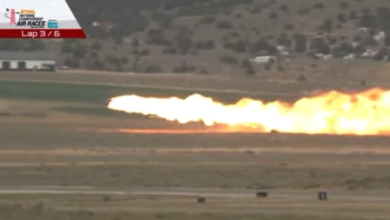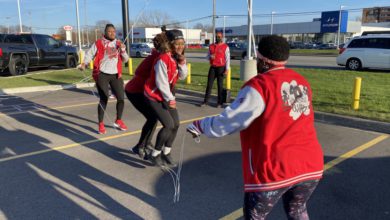
Before she stormed the U.S. Capitol on Jan. 6, Ohio resident Jessica Watkins wrote on the social media site Parler that her militia, the Ohio State Regular Militia, had spent the day “protecting various speakers on the main stage in Freedom Plaza.”
“You are all amazing America!,” she wrote. “We love you!”
Watkins, 38, from Champaign County, later posted a picture of herself in military gear: “Me before forcing entry into the Capitol Building. #stopthesteal #stormthecapitol #oathkeepers #ohiomilitia”
Watkins was one of two Champaign County residents arrested after the Capitol riots that left five dead. She and 50-year-old Donovan Ray Crowl, another member of her militia, were each charged with entering a restricted building, violent entry or disorderly conduct and obstruction of an official proceeding.
Here’s what we know so far about the Ohio militias involved in the riots:
The Ohio State Regular Militia
Watkins considers herself the commanding officer of the Ohio State Regular Militia. Her Parler account, which features a headshot of her in military garb over a “Back the Blue” banner, says the militia is “a group that is sworn to defend the Constitution. We are NOT anti-government. We do not allow any intolerance or extremism. We Back the Blue!”
The FBI says the Ohio State Regular Militia is a “dues-paying subset” of the Oath Keepers.

In an article in the Ohio Capital Journal before she was arrested, Watkins is quoted as calling the Capitol riot “the most beautiful thing I ever saw until we started hearing glass smash. That’s when we knew things had gotten really bad.”
When was it founded? Reporting in the Ohio Capital Journal says Watkins, a bartender, formed the militia in 2019. Watkins told the Journal the militia has patrolled 12 protests in total.
How big is it? The Ohio State Regular Militia does not seem to have much of an online presence, and it’s unclear how large the group really is. Watkins was apparently at the Capitol with a group of three others from her militia, according to the Ohio Capital Journal.
Mark Pitcavage, a senior research fellow with the Anti-Defamation League, said he hasn’t seen any photograph of the group with more than a handful of people. And other than showing up at a few recent protests, he is unaware of any other activities by the Ohio State Regular Militia.

The Oath Keepers
The Oath Keepers is one of the largest radical, antigovernment groups in the United States, according to the Southern Poverty Law Center. It is based on unfounded conspiracy theories about the federal government working to destroy the liberties of Americans.
When was it founded? The Oath Keepers was founded in 2009 in Las Vegas, Nevada, by former U.S. Army paratrooper Stewart Rhodes. The SPLC notes the militia was founded “in the direct aftermath” of the election of Barack Obama, America’s first Black president.
How big is it? The Oath Keepers have claimed as many as 30,000 members, though the actual count is likely much lower, according to the SPLC and the Anti-Defamation League.
Pitcavage said the group probably has more than 1,000 members nationwide. It’s hard to determine the group’s true size, he said, because it’s a dues-paying militia. So there may be many more supporters who are not actual members.
What are the core beliefs? Oath Keepers fear a “New World Order” that starts with firearm confiscation, a ban on interstate travel and concentration-camp-like detainment of U.S. citizens.
Oath Keepers vow to defend the Constitution. The group’s website says that Oath Keepers “will not obey unconstitutional orders, such as orders to disarm the American people, to conduct warrantless searches, or to detain Americans as ‘enemy combatants’ in violation of their ancient right to jury trial.”
The FBI called the Oath Keepers a “paramilitary organization” and a “large but loosely organized collection of militia who believe that the federal government has been coopted by a shadowy conspiracy that is trying to strip American citizens of their rights.”
Motto: Not on our Watch
Who are they? Anyone can join the Oath Keepers, so long as they pay the dues, but the group makes a special point to target law enforcement officials, military veterans and first responders for membership.
Past run-ins with militia members in Ohio
A live napalm bomb: In April 2010, Cleveland man Matthew Fairfield, president of the local chapter of Oath Keepers, was arrested on charges involving explosives and child pornography, according to the Anti-Defamation League. When executing a search warrant, officials found a live napalm bomb and dozens of other explosives in a storage locker. Fairfield was eventually indicted on 97 charges. He pleaded no contest in 2011 and was sentenced to 16 years in prison.
United Sheepdogs of Ohio: Two members of the United Sheepdogs of Ohio pleaded guilty in 2019 to charges related to making bombs. Ryan King, 37, and Randy Goodman, 53, tested their "crater makers" in January 2019 at Goodman's home in Brown County, according to court documents and previous Enquirer reporting.
An indictment says King and Goodman discussed the Boston Marathon bombing as well as their desire to find the “most lethal” way to construct their devices.
The indictment says the United Sheepdogs of Ohio operates in the southern half of the state and has about a dozen members.
75th Spartans: In May, Cleveland man Christian Ferguson was arrested on federal kidnapping charges for an alleged plot to ambush and kill police officers. Ferguson was reportedly trying to start his own militia group, called the 75th Spartans, according to the Anti-Defamation League.
How big is the threat?
Pitcavage said these militias are not particularly well organized, but that does not mean they are not dangerous. He pointed to the militia members who plotted to kidnap Michigan Gov. Gretchen Whitmer over her handling of the coronavirus pandemic. That plot, whose ultimate goal was to spark a civil war, was hatched in Ohio.
“The militia movement has a long history of criminal activity and violence, going back to the mid-1900s,” Pitcavage said. “People in the militia movement have been involved in a number of terrorist plots, have killed police officers, have made explosives, have converted weapons to fully automatic… They are a very extreme movement.”
What can you do?
The old adage is best, Pitcavage said: If you see something, say something. Report talk of violence to local police or FBI officials.
“Let them know,” Pitcavage said. “Maybe it turns out to be nothing, but maybe it prevents something.”
Source link








